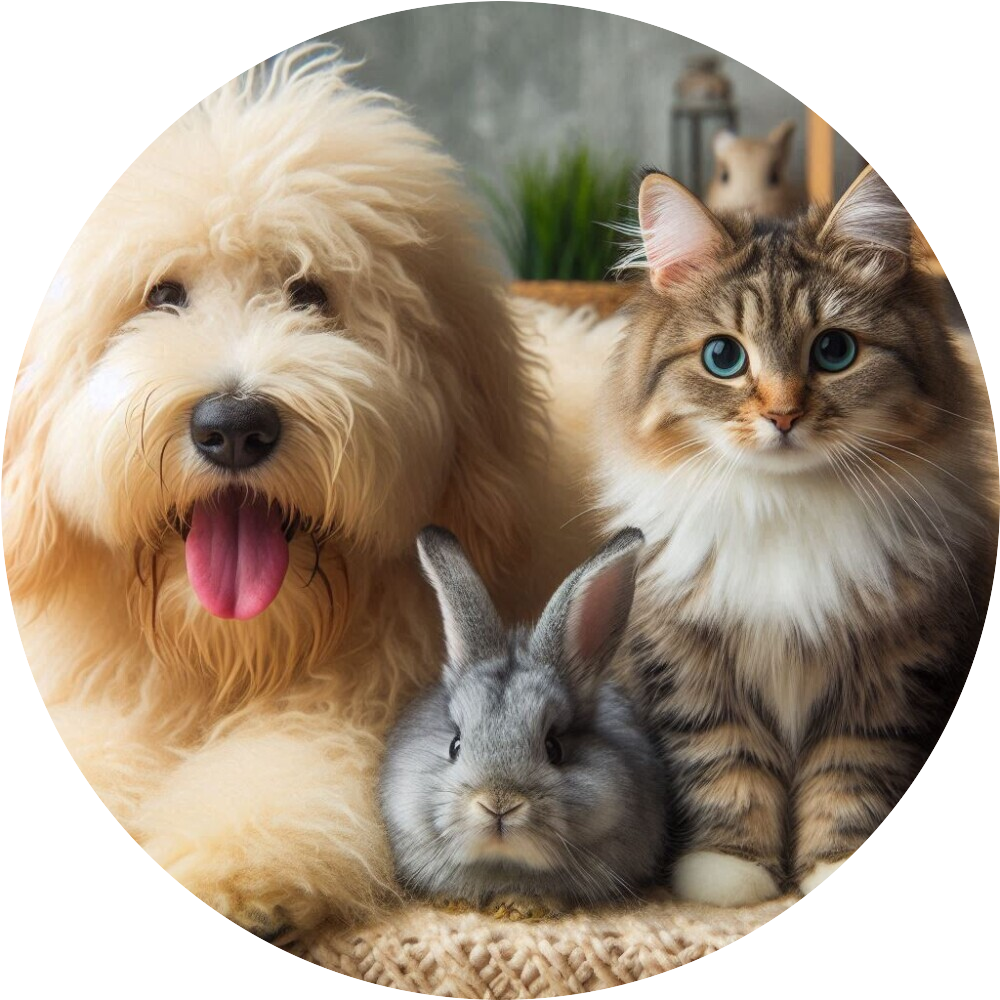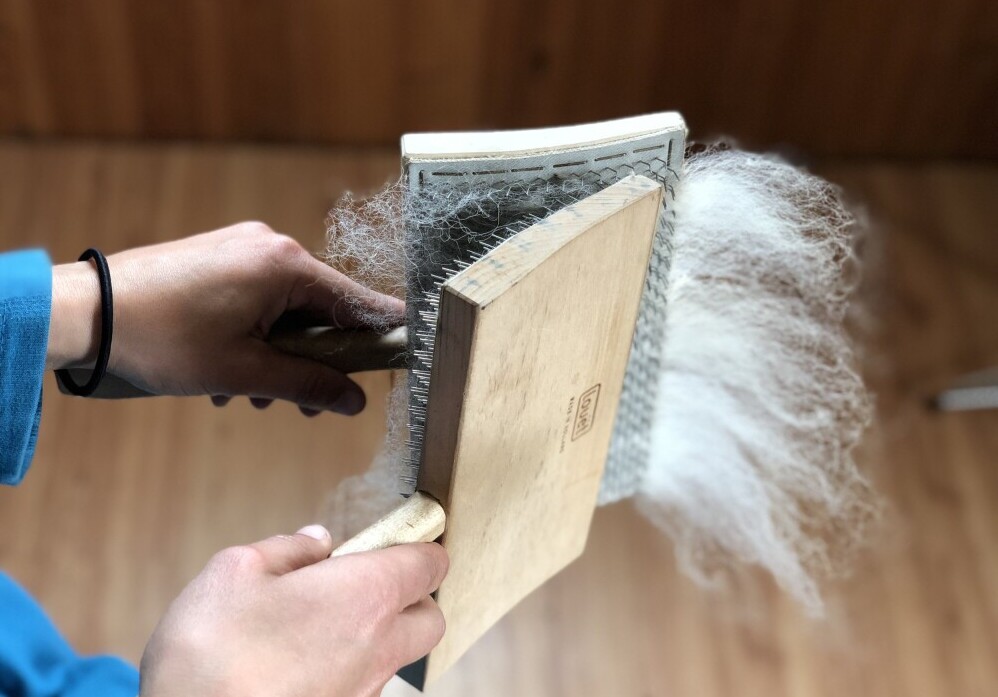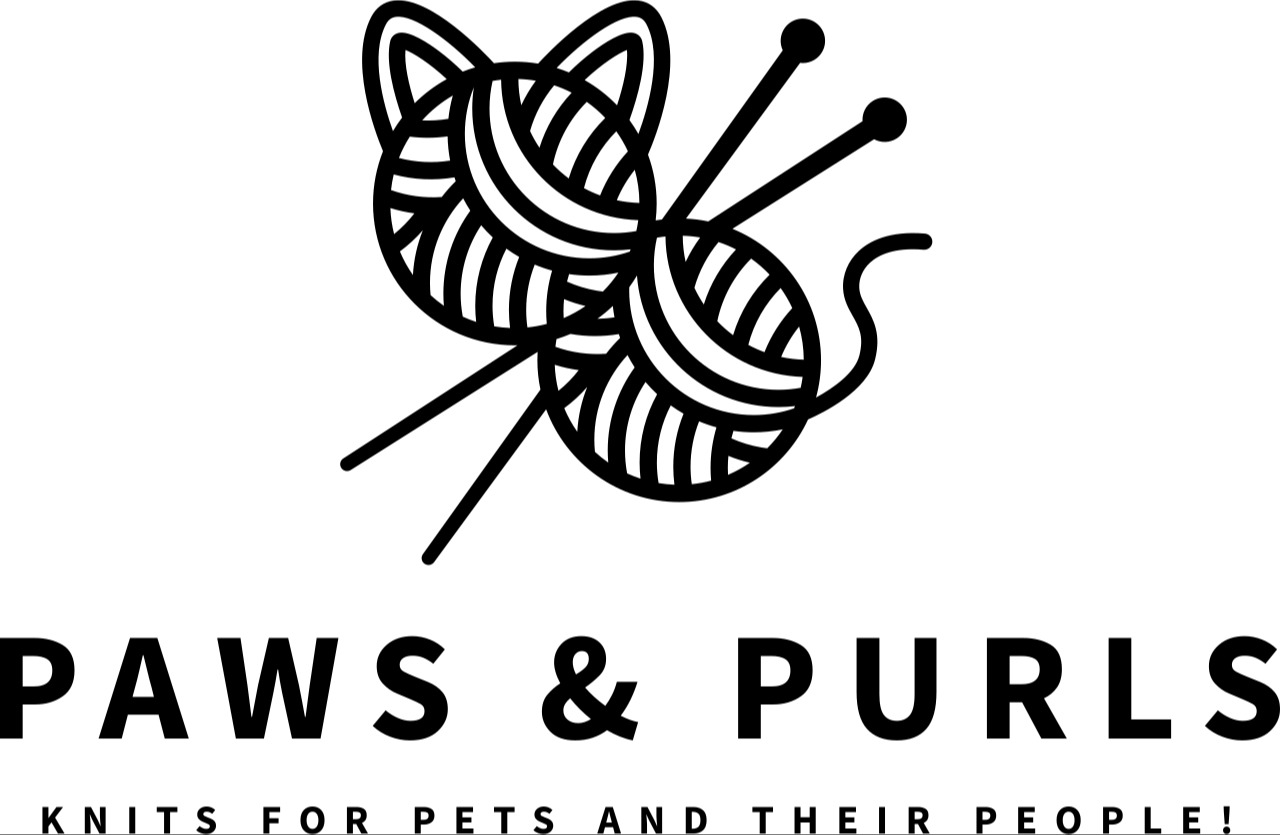Knitting with pet fur is more than just a quirky pastime – it’s a blend of nostalgia, sustainability, and personal touch you won’t get with any store-bought yarn. For those who adore their furry companions, turning their shed fur into a cozy accessory can be a sweet, sentimental way to keep them close, even when they’re not around. Imagine having a scarf or a hat made from your pet’s fur. Every time you wear it, you’ll be wrapped in their presence.
There’s also the sustainability factor. We’re all big fans of reducing waste, right? Instead of tossing out the fur from your cat’s constant shedding or your dog’s grooming sessions, why not repurpose it into something useful? It’s a beautiful way to contribute to eco-friendly practices and make use of materials that would otherwise go to waste.
Lastly, let’s talk about uniqueness. Forget cookie-cutter fashion! Pet fur yarn can create one-of-a-kind pieces that are unique to your pet’s color and texture. Whether it’s the silky strands of a rabbit fleece or the fluffy tufts of a collie, each type of pet fur brings its own character to your knitting projects. Plus, it’s a fantastic conversation starter! Imagine sharing the story behind your homemade sweater – it’s bound to turn a few heads.
Throughout this guide, we’ll explore the ins and outs of knitting with pet fur, covering everything from selecting the right type of fur to caring for your finished pieces. Get ready to embark on a knitting journey that’s as heartwarming as it is innovative.
Types of Pet Fur

Diving into the furry realm of pet fur, understanding the kinds of fur suitable for knitting can make or break your project. Different pets offer varied textures, lengths, and softness, which can impact your knitting experience and the final look of your creation.
Dog fur is probably the most common go-to for pet fur knitting. Breeds like the Collie, Samoyed, and Golden Retriever have ample coats that shed fluffy fur resembling wool. This fur is usually long, making it easier to spin into yarn. The natural warmth of dog fur also makes it perfect for cozy winter accessories.
Cat fur, particularly from long-haired breeds like Persians and Maine Coons, can be another excellent choice. Cat fur tends to be shorter and softer than dog fur, giving a delicate texture to the yarn. Just a heads-up, though – you might need more cat fur to produce enough yarn for larger projects since their fur can be quite fine.
Let’s not forget about rabbits. If you have an Angora rabbit, you’re in for a treat. Angora fur is incredibly soft and luxurious. It’s one of the most prized fibers in the knitting world due to its smooth texture and warmth. Knitting with Angora rabbit fur can give your projects a high-end, luxurious feel.
Each type of pet fur brings its own set of characteristics and quirks. Dog fur gives volume and warmth; cat fur offers delicacy and softness; rabbit fur provides unparalleled luxury. Knowing these qualities helps in picking the right fur for the project you have in mind, ensuring your knitting experience is a pleasant one.
Preparing Pet Fur for Knitting
Alright, you’ve got your fur stash ready, but before you can start spinning and knitting, there are a few prep steps. First up is collecting the fur. You can gather pet fur through regular brushing sessions. Brushing not only helps collect the fur but keeps your pet’s coat healthy too. Another nifty method is using a pet-specific vacuum attachment designed to collect loose fur.
Next comes cleaning. This step is crucial to remove any dirt, oils, or unexpected extras that might be caught up in the fur. Place the collected fur in a mesh bag and give it a gentle wash with mild, pet-friendly detergent. Don’t forget to rinse thoroughly and let it air dry completely. Clean fur not only spins better but also helps ensure the final yarn is pleasant to work with and wear.
Now, onto carding. Carding aligns the fibers, making them easier to spin into yarn. You can do this manually with hand carders. These look like spiked brushes that help detangle and align the fibers. If you prefer a bit of automation, a small drum carder can speed up the process. Carding is a game-changer, especially if your fur is matted or tangled.

Image credit: motherofpurl.net
Sometimes, pet fur might need a little extra something for added durability or texture. That’s where blending comes in. You can mix pet fur with other fibers like sheep wool or alpaca. Blending not only strengthens the yarn but can also add a different texture or color that enhances the overall look of your project.
Spinning Pet Fur into Yarn
Once your pet fur is all cleaned and carded, it’s time to spin it into yarn. Spinning might sound complex, but with the right tools and a bit of practice, you’ll be churning out beautiful yarn in no time.
For the basics, you’ll need a spinning wheel or a spindle. A spinning wheel is faster and can handle a larger volume of fur, but a spindle is perfect if you’re just starting or working with smaller amounts. Either way, you’ll be able to transform that fluffy fur into workable yarn.
Now, let’s chat about techniques. Pet fur often behaves a bit differently compared to traditional fibers like wool. For example, dog fur tends to be quite fluffy, which means you’ll need to be a bit more patient and maintain a steady hand to create consistent yarn. On the other hand, shorter cat fur might require tighter spinning to hold the fibers together.
Don’t get discouraged if your first few tries look a bit wonky. Spinning takes practice, and every type of pet fur has its quirks. The key is to find a rhythm that suits the fiber you’re working with. With a bit of experimentation, you’ll soon discover the best techniques that make your pet fur yarn smooth and strong.
Spinning pet fur into yarn is part skill, part art. Enjoy the process, and don’t rush it. The more you practice, the better your yarn will get. Embrace the imperfections; they add character and charm to your handmade creations.
There are lots of How-To videos out there that demonstrate spinning pet fur. Check out Theo the Sammy’s video here.
Knitting with Pet Fur Yarn
With your pet fur spun into yarn, it’s time to grab those knitting needles. Knitting with pet fur yarn presents unique joys and challenges. The texture of pet fur yarn can vary a lot depending on the type of fur used. Some yarn might be fluffy and soft, while others could be more robust and slightly coarse.
One of the first things to consider is the elasticity of your yarn. Pet fur yarn often lacks the natural elasticity found in wool. This means your stitches might need a bit more patience and care. Using slightly larger needles than usual can help achieve a smoother knit, especially if the yarn is on the thick side.
When it comes to patterns and projects, pet fur yarn works wonderfully for items like scarves, hats, or even small blankets. These projects take advantage of the natural warmth and unique texture of the yarn. Avoid projects that need a lot of stretch, like socks, as the yarn might not have the flexibility required.
Caring for your finished items is another critical step. Hand-wash your pieces with a gentle detergent and lay them flat to dry. Avoid wringing out the water, as this can distort the shape of your knit piece. Given the unique nature of pet fur, treat these items with extra care to ensure they last.
Overall, knitting with pet fur yarn is a rewarding experience that results in truly unique and personal creations. Embrace the quirks of the material and have fun experimenting with different projects. Your pet fur yarn masterpieces will not only be a testament to your knitting skills but also a cherished memento of your furry friends.
Environmental and Ethical Aspects
Using pet fur for knitting connects deeply with eco-friendly practices. By repurposing fur that would otherwise end up in the trash, you’re contributing to reducing waste. It’s a fantastic way to make use of freely available, natural material that doesn’t require harmful manufacturing processes. Think of it as a small, personal step toward a more sustainable lifestyle.
There’s also a significant ethical consideration in ensuring the welfare of the animals providing the fur. Pet grooming usually collects fur that’s naturally shed, meaning no harm comes to the animals. Unlike some commercial yarns, there’s no need for harmful practices when your source is your well-loved pet. This makes pet fur yarn not only sustainable but also cruelty-free.
If you blend your pet’s fur with other fibers, try to opt for ethically sourced materials. For example, look for wool from farms adhering to humane practices or seek out other sustainable fibers like recycled yarns. This ensures that every aspect of your knitting project respects the environment, and the creatures involved.
In using your pet’s fur, you’re creating a unique, eco-conscious product while promoting animal rights and sustainable living. Not only does this make your knitting projects special and personal, but it also aligns them with values that matter, fostering a positive impact beyond the joy of crafting itself.
Resources and References
Getting started with knitting pet fur yarn can be a bit daunting, so having the right resources at hand makes a huge difference.
When it comes to suppliers for tools and materials, local fiber arts shops often carry spinning wheels, spindles, and carding equipment. Don’t hesitate to ask for advice from the knowledgeable staff there. Online stores like Etsy and Amazon also offer a plethora of tools and gadgets tailored for fiber processing and spinning.
If you’re looking for tutorials, there are numerous books and online resources dedicated to spinning and knitting with pet fur. A recommended read is “Knitting with Dog Hair” by Kendall Crolius and Anne Montgomery, which provides detailed instructions and inspiring project ideas. Websites like Ravelry offer community forums and patterns where you can learn from seasoned crafters.
Workshops and classes can be incredibly beneficial. Check out local knitting groups or community centers for classes on spinning and knitting. Some fiber arts festivals also host workshops specifically about spinning unconventional fibers, including pet fur.
Following experts on social media can also be a great source of tips and inspiration. Platforms like Instagram or YouTube are filled with fiber artists who share their experiences and techniques. It’s like having a mentor right at your fingertips.
Having these resources by your side can transform your journey into pet fur knitting from a casual experiment into a well-supported and enjoyable craft. They provide the guidance needed to navigate each step, ensuring you have the knowledge and confidence to create beautiful, meaningful pieces.
Conclusion
Knitting with pet fur isn’t just a craft; it’s a blend of creativity, sentimentality, and sustainability. Exploring this unique medium brings a personal touch to your projects, transforming everyday shed fur into cherished keepsakes.
Don’t be afraid to experiment and embrace the learning process. Whether it’s the joy of collecting your pet’s fur, the thrill of spinning it into unique yarn, or the satisfaction of knitting a special piece, each step connects you more deeply to your craft and your furry friend.
Remember, the journey is just as important as the final product. Handling pet fur creates a stunning, one-of-a-kind project filled with love and warmth. So, grab those knitting needles, spin that special yarn, and create something truly exceptional. Dive into the world of pet fur knitting with confidence and a spirit of adventure. The possibilities are endless, and the results are heartwarming.


I love the idea of knitting with pet hair—it’s so unique and meaningful! Imagine making a cozy blanket or scarf that keeps you warm while reminding you of your furry friend. Has anyone here tried this before? How did it turn out? It’s such a cool way to reduce waste and create something special. What are some other creative ways you’ve found to use pet fur?
Cheers,
Gabriel John
I totally agree—knitting with pet hair is such a unique and meaningful idea! I haven’t actually tried it myself yet, but it’s definitely on my list of things to do. I’ve started collecting fur from my long-haired torty cat and can’t wait to see how it turns out.
There are also some other cool ways to use pet fur. For example, you can donate it to organizations like Matter of Trust, which uses it for environmental cleanups. It can be stuffed into toys or pillows or turned into felt. Since pet fur is rich in nitrogen, it’s great as a natural fertilizer for plants. Some people even use it as a deterrent for pests, (since animals can smell your dog and think it’s nearby) like squirrels and mice, or give it to birds for their nests. If anyone has tried these or has other creative ideas, I’d love to hear about them!